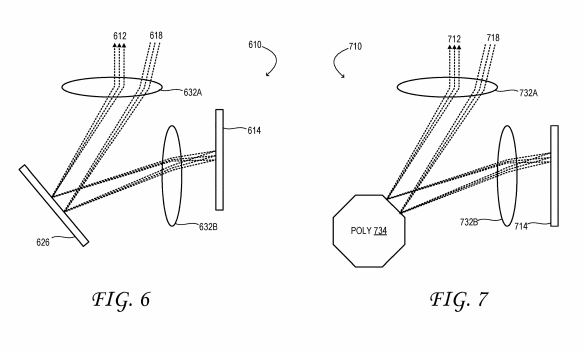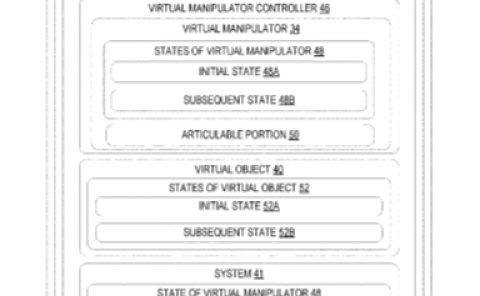Microsoft Patent | Multi-beam optical system for fast writing of data on glass
Patent: Multi-beam optical system for fast writing of data on glass
Publication Number: 10181336
Publication Date: 2019-01-15
Applicants: Microsoft

Abstract
An optical data-recording system comprises a laser, a dynamic digital hologram, an electronic controller, and a scanning mechanism. The dynamic digital hologram includes a plurality of holographic zones, and is configured to direct the irradiance received thereon to an optical recording medium. The electronic controller is operatively coupled to the dynamic digital hologram and configured to control the irradiance directed from each of the holographic zones. The scanning mechanism is configured to change a relative positioning of the laser versus the dynamic digital hologram so that each of the holographic zones is irradiated in sequence by the laser.
Background
High-power, short-pulse laser irradiance can be used to write and store data onto a glass substrate. The irradiance induces, at its focus, long-lived or permanent structural and optical changes within the substrate medium, caused by non-linear (e.g., two-photon) absorption by the medium. In some cases, a nanoscale 3D structure with grating-like optical properties is formed at the focus of the irradiance. The term voxel is used herein to refer to an individual locus of this or another induced structural or optical change within the substrate medium, which is useful for storing data.
A voxel can store data in many different forms. In principle, any of the Muller-matrix coefficients of a medium can be manipulated and used to encode data. In some examples, a voxel written onto a substrate may be modeled as a waveplate of a certain retardance .delta.d (measured in nanometers (nm)), and angular orientation .PHI. (measured in degrees). Both the retardance and the orientation may be used to encode data. When a voxel is written by a polarized laser beam, the angle of the polarization determines the orientation .PHI. of the waveplate grating, while the intensity of beam (i.e., beam power or accumulated energy) determines the strength of the grating, and accordingly, the retardance .delta.d.
Summary
The examples disclosed herein relate to an optical data-recording system comprising a laser, a dynamic digital hologram (DDH), an electronic controller, and a scanning mechanism. The dynamic digital hologram includes a plurality of holographic zones, and is configured to direct the irradiance received thereon to an optical recording medium. The electronic controller is operatively coupled to the dynamic digital hologram and configured to control the irradiance directed from each of the holographic zones. The scanning mechanism is configured to change a relative positioning of the laser versus the dynamic digital hologram so that each of the holographic zones is irradiated in sequence by the laser.
This Summary is provided to introduce a selection of concepts in a simplified form that are further described below in the Detailed Description. This Summary is not intended to identify key features or essential features of the claimed subject matter, nor is it intended to be used to limit the scope of the claimed subject matter. Furthermore, the claimed subject matter is not limited to implementations that solve any or all disadvantages noted in any part of this disclosure.



